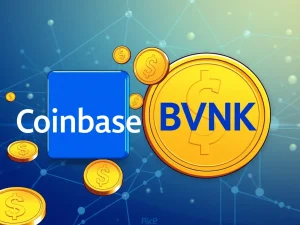Gold-backed Crypto Soars Amidst Global Trade Uncertainty

Investors are turning to alternative assets as global economic tensions rise. Amidst increasing trade uncertainty, particularly following recent tariff announcements, traditional safe havens are gaining traction. This shift in investor behavior is having a notable impact on the cryptocurrency market, specifically on assets designed to mirror the value of physical commodities.
Why Gold-Backed Crypto is Gaining Traction
In times of economic unpredictability and geopolitical conflict, assets perceived as stable stores of value often see increased demand. Gold has historically served this purpose, acting as a hedge against inflation and currency devaluation. Now, its digital counterparts are following suit. Gold-backed crypto tokens, which are designed to represent ownership of physical gold, offer a modern, blockchain-based way to access this traditional safe haven.
Recent data highlights this trend:
- Tether Gold (XAUT) and Paxos Gold (PAXG) have seen significant price increases, rising around 7% in the past month.
- Both XAUT and PAXG reached new all-time highs on April 22.
- Other tokens like Quorium (QGOLD) and Kinesis Gold (KAU) also recorded rises of over 7% in the last 30 days.
- Collectively, these four tokens are up 40% or more over the past year.
The price of physical gold has also increased. Following President Trump’s tariff announcements on April 2, the price of an ounce of gold jumped from $3,115 to $3,335 by April 28, a 7% increase in less than a month. This mirrors the movement seen in the gold-backed tokens.
Seeking Safe Haven Assets in Tumultuous Times
The primary driver behind the surge in both physical gold and gold-backed crypto is the increased investor demand for safe haven assets. Macroeconomic factors, including escalating global economic uncertainty and geopolitical tensions, are making traditional investment avenues appear riskier. Inflation concerns also play a role, prompting investors to seek assets expected to retain value during periods of rising prices.
Bitcoin, often dubbed ‘digital gold’, has also performed strongly during this period, rising 14% over the past month, indicating a broader trend towards non-traditional assets perceived as hedges against uncertainty.
The Growing RWA Market and Tokenized Gold
The rise of gold-backed crypto is part of a larger trend: the tokenization of real-world assets (RWAs). This involves bringing assets like precious metals, bonds, and real estate onto the blockchain. The RWA market capitalization (excluding stablecoins) has grown significantly, standing at $21.6 billion and showing an 8.6% increase in the last 30 days.
Tether Gold and Paxos Gold are prime examples within this market. Each token is reportedly backed by one troy ounce of physical gold, stored in secure vaults (Switzerland for Tether, London for Paxos). Tokenized gold has emerged as a strong use case for crypto, reaching a two-year high in trading volume on April 10.
Advantages of Tokenized Gold
Investing in tokenized gold offers several advantages compared to traditional gold investment methods:
- Instant Settlement: Transactions can be settled instantly on the blockchain, allowing for quick trading and transfer.
- Enhanced Usability: Some tokenized gold tokens can potentially be used for purchasing goods and services, unlike traditional gold instruments which are typically redeemable only for fiat currency.
- Accessibility: Tokenization can make fractional ownership and investment in gold more accessible to a wider range of investors.
Conclusion: Gold-Backed Crypto’s Role in a Changing Economy
The recent spike in gold-backed crypto highlights its growing relevance as a digital safe haven asset in an era marked by global trade uncertainty and economic shifts. As the RWA market continues to expand, tokenized gold provides investors with a modern, accessible way to hedge against traditional market volatility, combining the historical stability of gold with the efficiency and innovation of blockchain technology.







